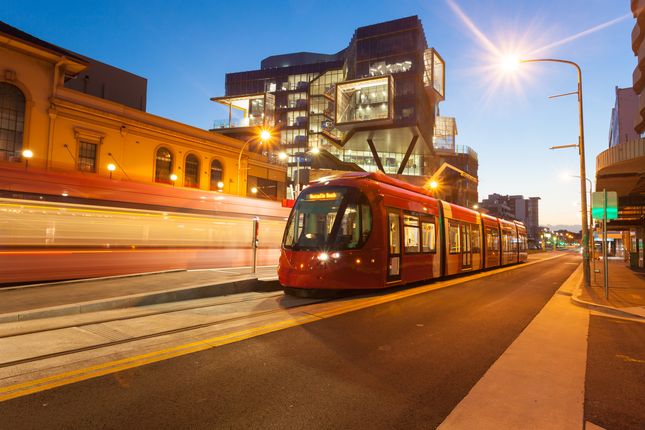30 September 2019
Australian cities which offered stamp duty discounts for seniors and had just installed light rail lines attracted the largest increase in attention from downsizers across 2018-19, according to new research.
Hobart, Canberra, Perth, Melbourne and Newcastle topped the list of the regions which attracted the biggest jump in 2018-19 online searches on Downsizing.com.au, which is Australia’s leading portal for over 50s property.
According to the analysis, the Hobart region had a 187 per cent increase in searches on Downsizing.com.au, between June 2018 and June 2019.
The result is not surprising. Compared to mainland capital cities, Hobart has a more affordable property market and therefore attracts downsizers who want to free up equity from their homes. In June 2019, the median attached dwelling price in Hobart was $375,000.
In addition, the Tasmanian Government is one of the few State Governments in Australia to offer downsizers a stamp duty incentive.

Canberra was next in line to record a strong search increase, with Australia’s capital recording a 124 per cent increase from June 2018 to June 2019.
The Australian Capital Territory (ACT) government’s tax reforms and light rail program are proving a hit with downsizers.
Stamp duty is regarded as one of the biggest barriers to downsizing, with a survey conducted by Downsizing.com.au and LJ Hooker in 2017 finding that 27 per cent of people nominated stamp duty as the one incentive which would help them downsize..
However, each year, the stamp duty rate falls in the ACT, as part of moves to replace it with a more efficient broad-based land tax. For instance, the stamp duty on an average Canberra house fell by $1,000 from 1 July 2019.
At the same time, eligible pensioners (including those moving into the ACT) will pay no stamp duty for purchases up to $420,000, representing a saving of $9,200, and receive a stamp duty discount for purchases up to $530,000.
Separately, Canberra appeal as a downsizing destination has been enhanced by the construction of a new light rail system, which officially opened in April 2019.
The city’s first 12km light rail stage connects the fast-growing area of Gungahlin, through Dickson to the City. By 2025, this north-south route will connect to Woden while by 2033 an east-west route is forecast to connect Belconnen to the Airport.
Canberra's median attached dwelling price in June 2019 was $430,000.

Despite the current woes of the Western Australian economy, Perth recorded a 116 per cent increase in consumer searches across 2018-19.
This could be because of the increasingly affordable property options in Perth, along with the city’s relatively relaxed nature and good climate. Perth's median attached dwelling price in June 2019 was $375,000.
Melbourne was next in line when it came to popular downsizing destinations, recording a 115 per cent increase in consumer searches.
Melbourne of course has a well-established light rail system, and an enviable downsizer-friendly urban lifestyle, but perhaps what is not as widely known is that the Victorian Government also offers a pensioner stamp duty incentive, which is regarded as the most lucrative in Australia.
This exemption allows eligible pensioners to get a full exemption from stamp duty for homes valued up to $330,000, with a duty discount available for homes valued from $330,001 to $750,000.
Melbourne's median attached dwelling price in June 2019 was $535,000.

The Hunter and North Coast region of NSW recorded a very commendable 111 per cent increase in searches on Downsizing.com.au.
This could be attributed to the fact that the NSW Government has invested over $650 million into a new light rail service for the region’s capital of Newcastle CBD (which in itself saw a 172 per cent increase in searches). See the photo of Newcastle's new light service at the top of the story.
Also in this region, the town of Port Macquarie saw a 121 per cent increase, while Tweed Heads recorded a 118 per cent increase.
Other regions which recorded big jumps in searches from 2018 to 2019 on Downsizing.com.au include Adelaide (110 per cent increase), Sunshine Coast (90 per cent increase), Brisbane (53 per cent increase), Gold Coast (45 per cent increase), NSW Central Coast (66 per cent increase) and Sydney (20 per cent increase).


